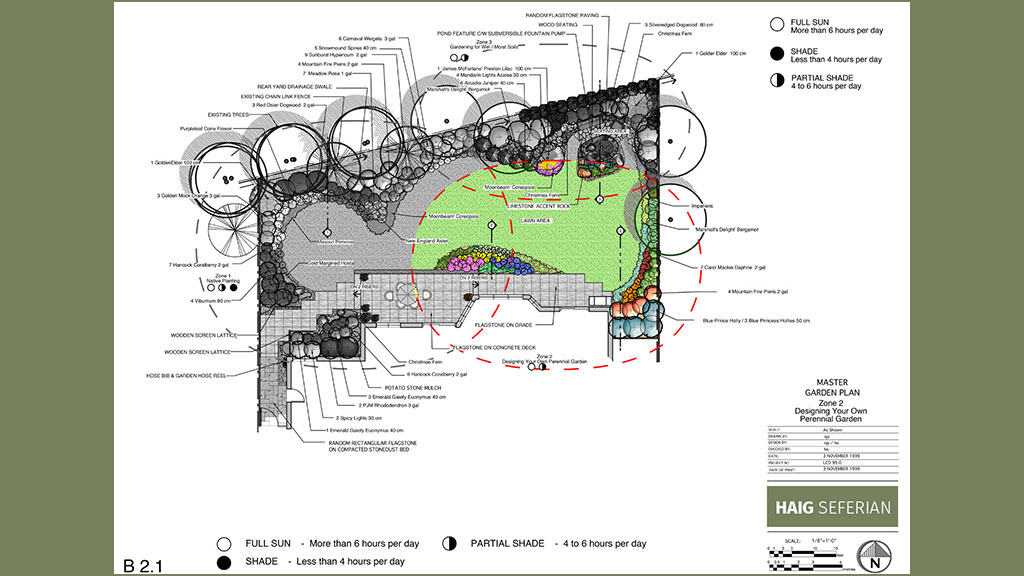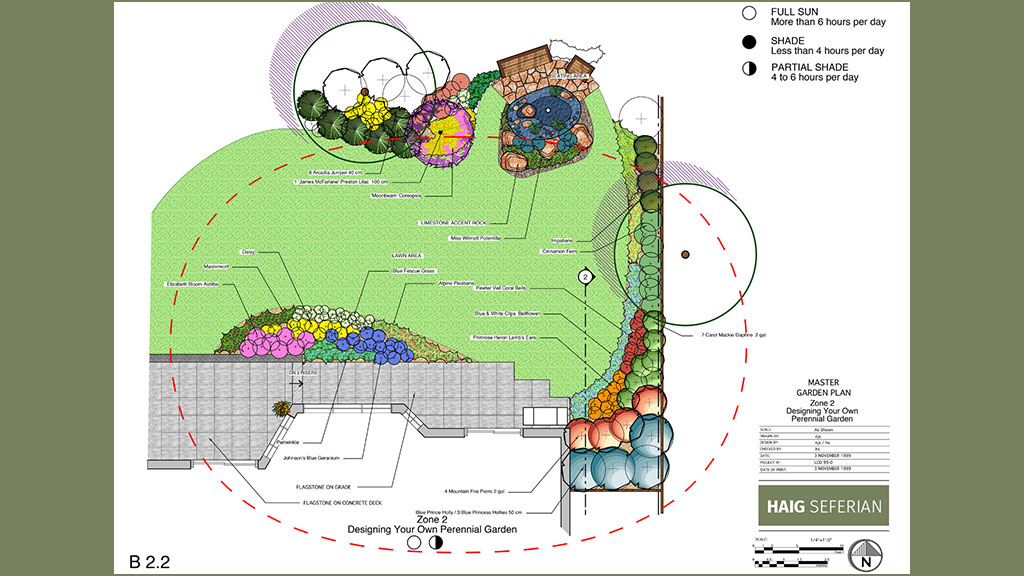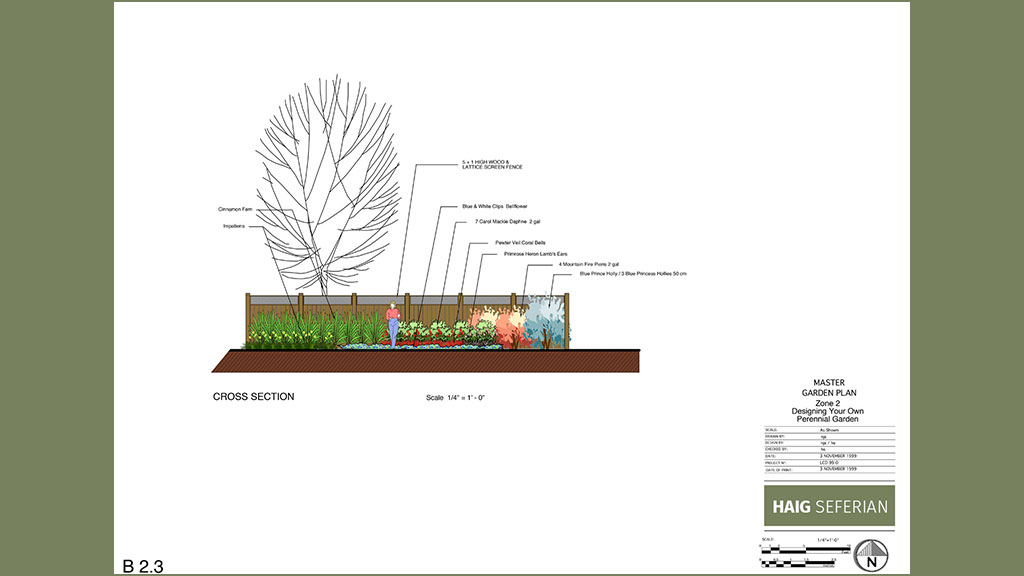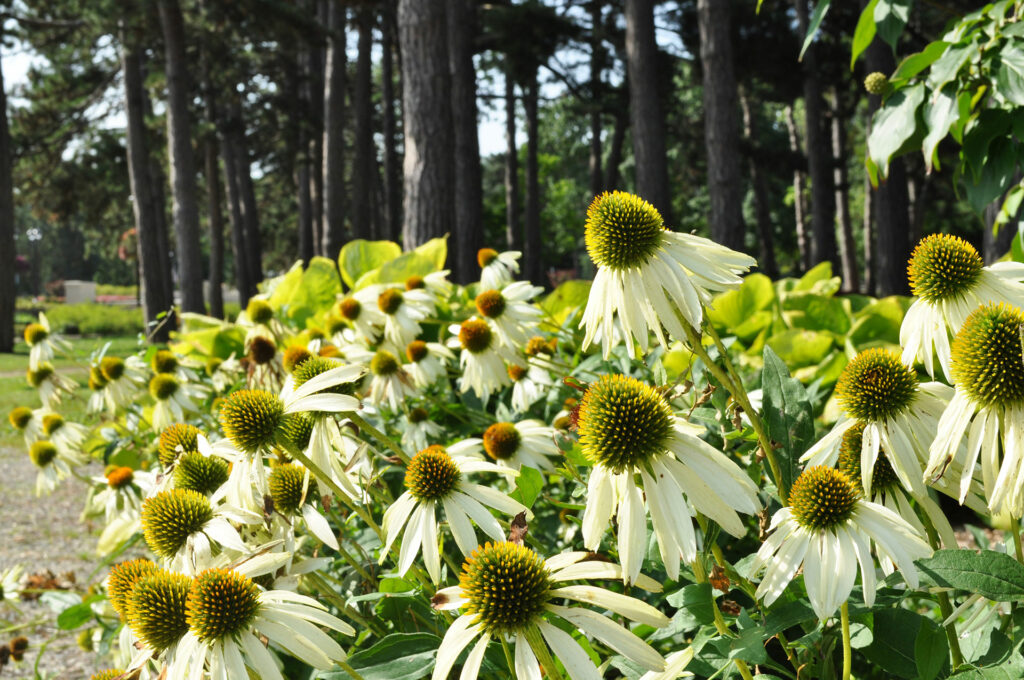Perennials are most definitely here to stay. Until recently, annuals were the flowers most sought after because of the variety of bright colours. More and more people are realizing the benefits of perennial gardening and are developing a great amount of respect for those plants that endure and yet still provide us with beautiful colour all year round. Perennials provide us with constant change, a garden that changes in character from month to month. You can never get bored at seeing the same thing in a perennial garden because colours do not remain stagnant.
The defining difference between perennials and annuals is that perennials die around Winter and re-appear each Spring. Their flowering pattern is also different in that they flower for only 2-3 weeks. As a result, the successful perennial garden requires careful planning in the selection of plants to ensure flowering at any given time during the growing season. By definition, a perennial is a herbaceous (soft and fleshy) plant that thrives for three or more years. They come in a variety of sizes , shape, colours and can bloom from early April until late October. They are very compatible with most other plant types and are one of the easiest plants to grow. Sun or shade, clay or loam, there is a perennial for almost all your garden needs.

Planning is an essential part of the perennial garden, otherwise, they have no direction and are merely a jumble of colour. Long before you begin planting, determine the following:
- The shape of your garden.
- The angle from which you prefer to view your garden.
- Whether you want a formal or informal garden.
- The type of planting (bed or border) you want.

Once you have decided on all of the above, you can then start to choose the types of plants required, taking into consideration light and soil requirements, plant heights, time and length of flowering. Other factors to consider are plant fragrance, the suitability of plants for fresh cut or dried flowers, and the form and texture of the plants. You are now ready to lay out your garden on paper in the form of detailed plan and see how it will look.
Bed preparation is the next most important element to a successful perennial garden. First identify what type of soil you have, then dig the bed to a depth of one foot. For clay soils, add four to six inches of sand and peat moss to allow the soil to drain properly. Adding gypsum (5lbs to every 100 square feet) also helps break down the clay.
Sandy soils require four to six inches of organic material, such as peat moss, manure or compost to hold the moisture in the ground. Remember, whenever you are adding organic material, supplement it with a high nitrogen fertilizer (urea 33-0-0) to help break down the material. Lastly, add an all purpose fertilizer and work it into the soil. A top dressing of mulch will help keep moisture in and unwanted weeds out.
Although planting pere4nnials is not a very arduous task, there is a certain amount of maintenance required to make the garden look well kept. There are two stages in which perennials can be planted. DORMANT-when plants are planted in the Fall. ACTIVE-when plants are planted in the Spring. Just remember to dig a hole slightly larger than the plant container, place the plant in the hole at the same depth as the container. Follow up with water and a transplanting fertilizer.
In smaller gardens, choose plants with fine leaves such as thrift (Armeria maritima), clove pink (Dianthus detoides) or snow-in-summer (Cerastium tomentosum). If your garden has more room, larger, coarsely textured plants such as tall bearded iris (Iris germanica), peony (Paeonia sp.) or phlox (Phlox paniculata) will definitely be more appealing.

Maintaining a perennial garden involves watering, fertilizing, mulching, dividing, deadheading and staking taller plants. Newly planted perennials should be watered on a regular basis, whereas more established plants require water only during dry spells. They should be fertilized three times a year (Spring, Summer and Fall) with an all purpose granular fertilizer. If additional nutrients are needed, a water soluble general fertilizer should be applied.
Mulching around perennials helps the soil retain moisture and reduces the number of sprouting weeds. In addition, organic mulches such as shredded bark, compost or peat moss gradually break down over the Summer, adding vital nutrients and organic matter to the soil. Cocoa bean, needle and leaf mulches are some others used to cover perennials for the Winter.
Dividing plants not only controls the size of the plant, but also rejuvenates them providing an opportunity to revitalize the soil. Generally, a plant needs to be divided when it has a weak, dead centre, when it doesn’t bloom as well as it used to and when it doesn’t grow as well as it did in the past. Most plants can be divided in the Spring, but Spring bloomers should be divided after they have finished flowering.
By loosening the soil around the roots of the plant, the entire clump can be removed more easily for division. You can now separate the perennial clump into two or three sections. If the perennial is large, it can be cut with a spade, for smaller plants a sharp knife is usually sufficient. Discard the weakened centre of the uprooted perennials and replant the healthy small divisions elsewhere in the garden. It also helps to work a bit of peat moss and bone meal into the soil before planting. Water the plants as usual.
Deadheading is the removal of the finished flower on the plant. With most perennials, deadheading extends the length of time that a plant will flower. While with some others, deadheading acts to redirect plant food to produce a stronger, vigorous perennial that will bloom even better the following year.
Lastly, staking should be done for all tall perennials before they get too tall. This allows the stalks and leaves to grow up and through the support to disguise the stake. You can either purchase a support like a peony ring or you can push three poles around the plant and circle it with strong twine.
Perennials provide enjoyment in many ways and with a little effort you can enjoy a garden that blooms and grows year after year. Some favourites are:
- Artemisia
- Astilbe
- Convallaria
- Chrysanthemum
- Delphinium
- Dianthus
- Decentra
- Hemerocallis
- Lilium
- Paeonia
- Phlox
- Primula
- Rudbeckia

